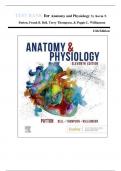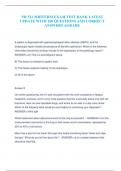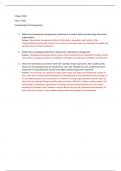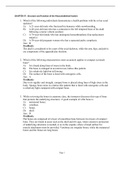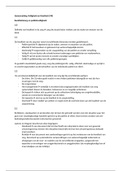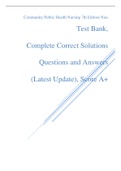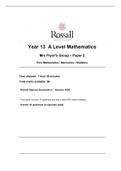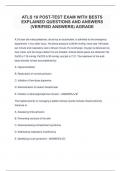Exam (elaborations)
Test Bank For Anatomy and Physiology 11th Edition By Kevin T. Patton, Frank Bell, Terry Thompson & Peggie Williamson All Chapters 1-48 LATEST
Test Bank For Anatomy and Physiology 11th Edition By Kevin T. Patton, Frank Bell, Terry Thompson & Peggie Williamson All Chapters 1-48 LATEST
[Show more]
